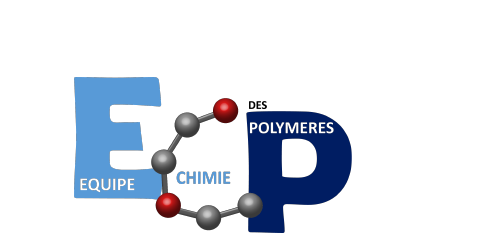γ-Thiobutyrolactone – ethylene carbonate decarboxylative copolymerization, an original pathway to prepare aliphatic oxidizable poly(γ-thioether ester)
Résumé
For the first time, the ring-opening copolymerization of γ-thiobutyrolactone and ethylene carbonate was investigated using benzyl alcohol–phosphazene bases as initiating systems. Full conversions of both monomers were obtained when the polymerization was carried out in the bulk at 90 °C. The structural analysis of the products was conducted by 1H, 13C, 2D NMR, FT-IR and MALDI-TOF mass spectrometry. The main propagation mechanism has been determined and alternatively involves the nucleophilic ring-opening of the thiolactone by alcoholate propagating centers and the decarboxylative S-alkylation of the thiolate propagating centers. Poly(thioether-alt-ester) with a low percentage of carbonate unit and controlled number-average molar masses were obtained. In a second step, the thioether embedded in the copolymer main chain were oxidized in THF. Sulfoxide functional groups were quantitatively and selectively obtained in the presence of an excess of hydrogen peroxide, without noticing any trace of overoxidation to sulfone. Finally, the solubility and thermal properties of the copolymers were investigated.
Domaines
Polymères| Origine | Fichiers produits par l'(les) auteur(s) |
|---|

